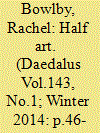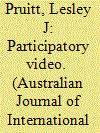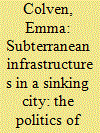|
|
|
Sort Order |
|
|
|
Items / Page
|
|
|
|
|
|
|
| Srl | Item |
| 1 |
ID:
128290


|
|
|
|
|
| Publication |
2014.
|
| Summary/Abstract |
In this piece. I look at an essay that l have probably read too often not to find in it the key to all matters
aesthetic, historical. philosophical, and more. The essay is Charles Baudelaire°s Le Peintre de la vie modeme (The Painter of Modern Life), first published in 1863 and written, most probably, around 1859 to 1860. Baudelaire's exhilarating innovation is to down- play the signi?cance of eternal value in art. in favor of what he designates as its other half, the ?eeting presentness that is modernity. My essay is unapologetically an appreciation - for the most part - of a text that, in focusing on another artist, itself appears to be just that.' For Baudelaire develops his arguments through a mock-anonymous celebration of the artist Constantine Guys, referred to as M. G. (Monsieur G.). Guys's proli?c sketches, done at speed, for rapid journal publication, chart the smallest of day-by- day changes and typical scenes in contemporary life. Guys's pictures - the art of modernity - give to the day a second life. and "translate" into a different medium - from sight to (mental) impression to its "rebirth" as a sketch - that which would otherwise be lost with its passing.
|
|
|
|
|
|
|
|
|
|
|
|
|
|
|
|
| 2 |
ID:
184766


|
|
|
|
|
| Summary/Abstract |
This article considers the implications of incorporating participatory video in International Relations (IR) research. Drawing on existing aesthetic and visual IR research, I critically reflect on a case study incorporating participatory video in research investigating young women’s leadership in Asia and the Pacific. Through participatory video, young women redressed their common invisibility and challenged portrayals situating them as unable to lead and make decisions. In this way, participatory video disrupted and unsettled power relations often resulting in young people’s marginalisation from policymaking. Given its ability to make space for productive reflections on, and challenges to, existing power dynamics amongst and between researchers, research participants, and the state, participatory video can productively push the boundaries of IR research. Limitations and challenges of using participatory video are also evident and require reflection. Overall, I suggest that participatory video can generate new critiques and knowledge to productively shape current and future IR research, including through offering unique insights that could be missed by other methods in IR, including other filmmaking approaches.
|
|
|
|
|
|
|
|
|
|
|
|
|
|
|
|
| 3 |
ID:
173412


|
|
|
|
|
| Summary/Abstract |
Indonesia’s capital city of Jakarta is one of the world’s fastest sinking cities. Land subsidence, primarily caused by excessive groundwater extraction, damages infrastructure and buildings, and contributes to worsened flood events and tidal inundation. Land subsidence was first identified as an issue in 1989, yet groundwater extraction has only recently been regulated. Meanwhile, city authorities have focused on implementing large-scale infrastructural interventions to reduce the impacts of flooding. This article analyzes why land subsidence remained unaddressed for so long. To do so, it explores the politics of infrastructure in Jakarta through the lens of in/visibility. Scholarship in infrastructure studies has tended to categorize infrastructure as either hyper-visible by design, or invisible until breakdown. This study extends theoretical engagements with infrastructure by examining how visibility, aesthetics, and materiality converge to shape urban and water governance in Jakarta in fundamental ways. Spectacular, visible infrastructures generate public and political attention, while below ground, hidden and invisible infrastructures are overlooked and politically unpopular to address. This “politics of visibility” articulates with a mode of aesthetic governmentality with uneven consequences for Jakarta’s residents.
|
|
|
|
|
|
|
|
|
|
|
|
|
|
|
|
|
|
|
|
|